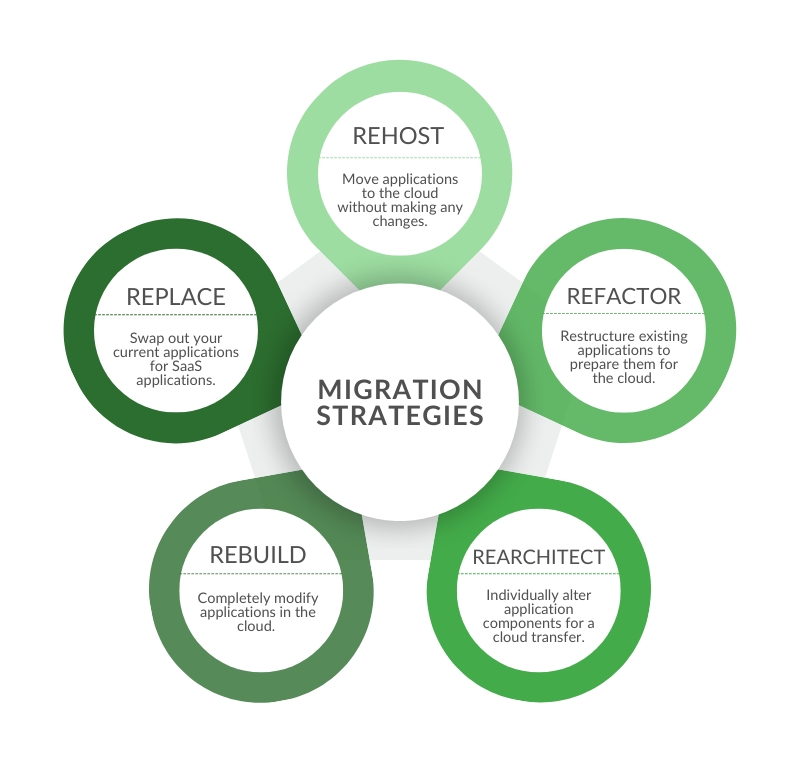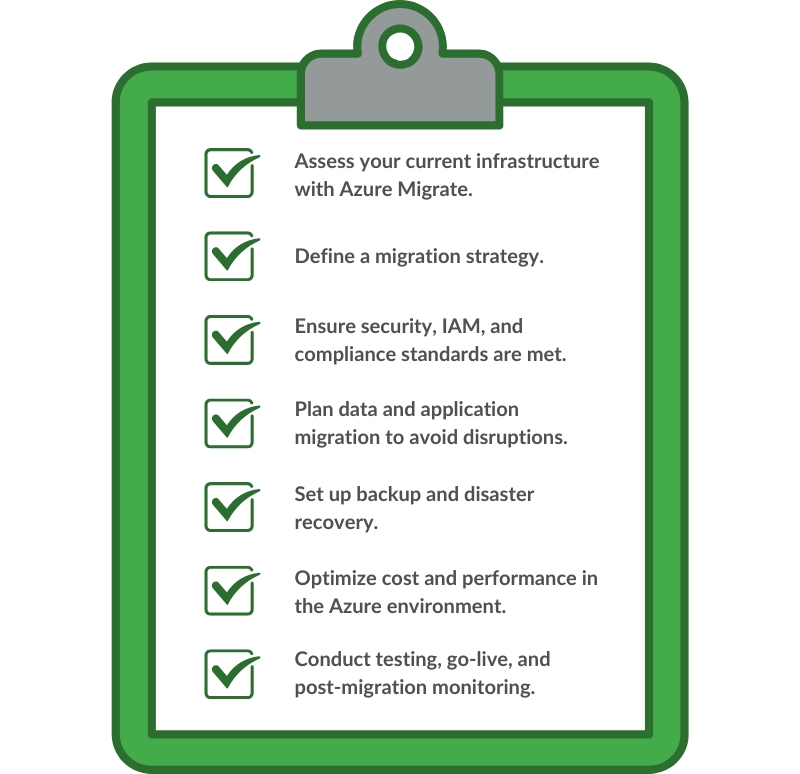Best Practices for a Successful Azure Cloud Migration

Introduction
Fifteen years ago, Microsoft launched Microsoft Azure, a cloud-computing platform that allowed businesses to eliminate on-prem systems in favor of cloud infrastructure. Since 2010, Microsoft has established a massive global network of over 300 data centers that power and protect businesses in the cloud.
Cloud computing has transformed the business landscape, allowing for seamless data sharing, transferring, and protection. Preparing for a cloud migration can be difficult, though, and businesses often face challenges with downtime, data security, and compatibility issues.
To minimize disruptions caused by cloud migration, you should establish a structured migration plan aligned with your business objectives and goals. This will keep your business on track for a successful migration process.
Why Migrate to Azure?
Microsoft Azure supports businesses of all sizes around the world with fast and reliable cloud services. Their team ensures your information is delivered to the proper channels efficiently. Some other benefits of Microsoft Azure include:
Scalability: Easily expand your organization’s IT infrastructure based on needs. Azure’s cloud environment adapts to your growing business, allowing for greater flexibility and efficiency in resource buying.
Cost Efficiency: Microsoft’s pay-as-you-go pricing model eliminates upfront hardware costs. Your organization only pays for the resources you use, optimizing overall spending.
Security & Compliance: Built-in security tools and regulatory compliance features protect your business from cyber threats. Microsoft’s team implements AI with continuous monitoring to identify vulnerabilities before they impact your environment.
Enhanced Performance: Azure provides reliable cloud infrastructure with global availability, keeping your business connected for optimized performance.
Best Practices for a Successful Azure Cloud Migration
A full cloud migration can seem like a large undertaking, but they don’t need to be complicated. Here are some key steps for your business to consider while developing an Azure cloud migration plan.
Step 1: Assess and Plan the Migration – To prepare for your Azure migration, thoroughly assess your IT environment to identify business-critical applications and dependencies. Once you’ve assessed your infrastructure, you can determine which migration strategy best suits your business.

Use Microsoft’s free Azure Migrate tool to assess your workload before switching your environment to Azure.
Step 2: Define Security & Compliance Requirements – Ensure your organization understands and complies with relevant industry standards, such as GDPR, HIPAA, and SOC 2. For increased security, implement solutions like Identity and Access Management (IAM), Multi-Factor Authentication (MFA), and Role-Based Access Control (RBAC). These systems limit access throughout your environment, so only authorized users can view sensitive information. Encryption is another effective way to protect your data from being breached.
Step 3: Optimize Network & Connectivity – Choose the right Azure region for your business that meets compliance requirements. This reduces latency across your cloud environment, minimizing downtime while improving employee productivity. For secure connectivity between on-prem and cloud systems, set up Azure ExpressRoute or VPN Gateway. Your organization can achieve optimal performance by configuring load balancing and a strong traffic management strategy.
Step 4: Data & Application Migration Strategy – Determine which data migration approach works best for your business, whether online, offline, or hybrid. Azure’s Database Migration Service will help you seamlessly transfer your data to Azure platforms. You can also check for application compatibility in an Azure test environment designed for customization and efficiency. To ensure your systems continue performing optimally, implement continuous monitoring and logging.
Step 5: Implement Backup & Disaster Recovery – Set up Azure Backup and Site Recovery for failover protection. This helps prevent data loss in the event of a breach. Your business should define a continuity plan, so employees know how to maintain essential functions during a cyberattack, minimizing risks associated with downtime. Along with this, be sure to regularly test disaster recovery scenarios to ensure data and systems return to normal.
Step 6: Optimize Performance & Cost Management – Use Azure Cost Management & Advisor to monitor and optimize expenses. Implementing tools like auto-scaling helps your business adjust resources based on demand, eliminating overspending. Another effective way to manage costs is by optimizing storage and computing resources for cost efficiency.
Step 7: Testing & Go-Live Strategy – Perform pre-migration testing to validate workloads. Conducting pilot migrations can help your company detect potential issues before they impact your environment. To limit operational disruptions during your migration, plan a staged rollout. This ensures that everyone in your organization transitions smoothly while minimizing overall downtime. Lastly, establish post-migration monitoring with Azure Monitor and Security Center to maintain continuity and optimize performance.
Azure Cloud Migration Checklist

Conclusion
To get the most out of your Azure cloud migration, it is important to develop a strong plan beforehand. Consider which security measures are most important to your infrastructure and conduct tests to ensure your migration runs smoothly.
Businesses need structure during major transitions to keep everything on track and verify that systems are performing optimally. By implementing our best practices, you can achieve a successful, stress-free cloud migration.
Still not sure how to get started with your Azure cloud migration? Consider partnering with an MSP like Plow Networks to receive expert guidance and support during your migration process.
Explore more on:





